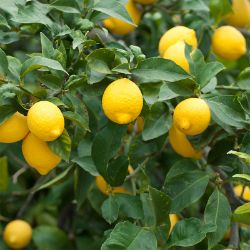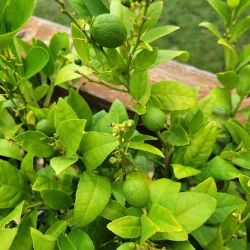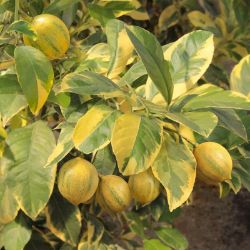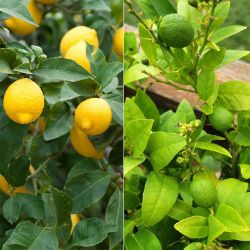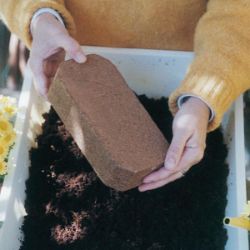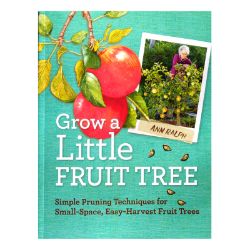Pest & Disease Control for Citrus Trees
Every plant has the future potential for disease and insect damage. Factors such as location and weather will play a part in which issues your plants encounters. If available, disease-resistant varieties are the best option for easy care; and for all types of plants, proper maintenance (such as watering, pruning, spraying, weeding, and cleanup) can help keep most insects and diseases at bay.
NOTE: This is part 7 in a series of 11 articles. For a complete background on how to grow citrus trees, we recommend starting from the beginning.
Red Spider Mites
Pinpoint size, many different colors. Found on undersides of leaves. Severe infestations have some silken webbing. Sap feeding causes bronzing of leaves.
Natural Control
- Safer® Brand Insect Killing Soap
- Monterey Horticultural Oil
- Monterey Fruit Tree Spray Plus (Orange, Lemon, Lime)
- A strong stream of water from your garden hose or put them in a bathtub and vigorously rinse off foliage.
Thrips
Tiny, slender, fringed wing insects ranging from 1/25 to 1/8” long. Nymphs are pale yellow and highly active and adults are usually black or yellow-brown, but may have red, black or white markings. Feed on large variety of plants by puncturing them and sucking up the contents.
Natural Control
- Safer® Brand Insect Killing Soap
- Hi-Yield® Vegetable & Ornamental Insect Control
- Monterey Fruit Tree Spray Plus (Orange, Lemon, Lime)
- Traps
Scale
Usually on bark of young twigs and branches, encrusted with small (1/16”) hard, circular, scaly raised bumps with yellow centers, may also be on fruit. Sap feeding weakens the tree.
Natural Control
- Monterey Fruit Tree Spray Plus (Orange, Lemon, Lime)
- Monterey Horticultural Oil
- Safer® Brand Insect Killing Soap
- Put a drop or two of dishwashing detergent in a spray bottle and fill with water and shake to make suds. Spray every limb and leaf of the tree.
Chemical Control
- GardenTech® Sevin® Concentrate Bug Killer (Orange, Lemon, LIme)
Mealybug
Adults are 1/4” long, flat, oval shaped with a white waxy covering. Yellow to orange eggs are laid within an egg sac. Crawlers are yellow to brown in color. Over winters as an egg or very immature young in or near a white, cottony egg sac, under loose bark or in branch crotches, mostly found on north side. Damage is by contamination of fruit clusters with egg sacs, larvae, adults and honeydew, which promotes growth of black sooty mold.
Natural Control
- Monterey Horticultural Oil
- Monterey Fruit Tree Spray Plus (Orange, Lemon, Lime)
- Safer® Brand Insect Killing Soap
- Remove and destroy infected plants.
Whitefly
Adults are tiny, white winged insects found mainly on the underside of leaves. Nymph emerge as white, flat, oval shapes. Larvae are the size of a pinhead. Suck plant juices from leaves causing them to turn yellow, appear to dry or fall off plants.
Natural Control
- Safer® Brand Insect Killing Soap
- Monterey Horticultural Oil
- Monterey Fruit Tree Spray Plus (Orange, Lemon, Lime)
- Traps
Leafroller
Pale yellow or ‘dirty’ green worms. Leaves are rolled and webbed together where insects feed. Eventually becomes ‘skeletonized’.
Natural Control
- Natural Guard® Caterpillar Killer Spray w/BT (Orange)
Orange Dog Caterpillar
Large caterpillar that is brown in color and about 1½-2 inches long. They feed on the leaves of the plant. Caterpillars can rapidly strip the leaves on an entire tree in a few days. The adult butterfly, black and yellow swallowtail, lays her eggs on the leaves.
Natural Control
- Remove and destroy caterpillars and eggs by hand.
- Natural Guard® Caterpillar Killer Spray w/BT (Orange)













